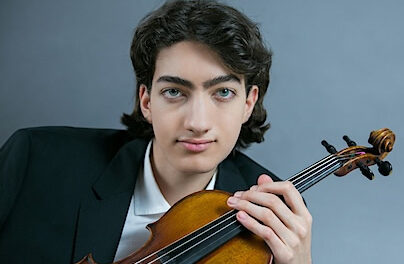The concept of the musical “supergroup” has been around for ages in all musical genres: simply assemble the acknowledged greatest musicians into an ensemble and how can you go wrong? Unfortunately, for various reasons, the whole does not always equal the sum of its parts. However, in the case of the piano quartet known as Opus One, the individual master musicians have come together in a group that is as super as it gets. Pianist Anne-Marie McDermott, violinist Ida Kavafian, violist Steven Tenenbom and cellist Peter Wiley are all the cream of the crop of New York based musicians and are, or have been, members of other notable chamber music groups. Duke Performances, in association with The Chamber Arts Society of Durham were fortunate in booking this piano quartet that actually does not perform as such all that often.
As usual, Reynolds Auditorium at Duke University was nearly all filled as Opus One began their program with a very safe and very classical early Beethoven work: Piano Quartet in E-flat major, Op. 16. Published in 1801, Beethoven was following the fashion of the time – in large part to sell more copies of basically the same music – of making two arrangements of piano chamber works: one with strings and one with winds. This particular work is his own alternate version of his Quintet for Piano and Winds (oboe, clarinet, bassoon and horn), written in 1796. It may be better known in the original version where musicians blow into their instruments, but Opus One made it their own. It is a typical piece of the time as the opening movement has a grave introduction followed by a jaunty allegro. Opus One are the consummate pros; you can almost sense a telepathic connection in their phrasing, tempi and rubato. Most of Beethoven’s compositions contain some sort of variations – even when not explicitly labeled as such –and the luxurious andante cantabile movement was one of those. Pianist McDermott had the bulk of the melodic material and the strings uniformly followed her expressive lead. This led to the very spirited rondo, superbly played but even as a string player I must admit that it sounds better suited in the original version for winds.
Even in the closing days of 2010 it seems that, at least in the very traditional chamber music series such as this one at Duke, “new” music is presented with somewhat of an apology. Violinist Kavafian introduced Quartet for Piano and Strings, Op. 114, by Lowell Lieberman, and promised us a tonal, rather unthreatening work; she was correct on both counts. Written for Opus One and premiered in New Mexico last August, this is one of the most affecting and memorable works that I can recall on first hearing and should quickly enter the active repertoire of piano quartet literature. Except for a brief presto section towards the end, Lieberman’s work is primarily a subdued, evocative and harmonically lush composition that is beautifully orchestrated. From the opening, barely audible piano figuration to the successive entries of the strings to what sounds like possibly the longest fugue subject ever written, this is a meditative masterpiece that invites the audience into the musical equivalent of a hushed, revealing conversation.
Brahms’ Quartet for Piano and Strings, No. 3, like many of his works, had a long and tortuous journey of rewrites, adding and deleting movements and personal doubts of its worth, before it was released to the public. In fact, this quartet caused Brahms such angst and agony, that he suggested that the initial publication’s cover should contain a drawing of “a head with a pistol held to it.” Part of this unusual marketing strategy was caused by Brahms’ increasingly heightened infatuation with Clara Schumann, concert pianist and wife of friend Robert. The andante movement is a love song to Clara, and like many other of Brahms’ breathtakingly sensuous slow themes, he gives the initial statement to the cello. Peter Wiley, who has also been cellist with the Beaux Arts Trio and the Guarneri String Quartet, brought out the unbearable pathos of unrequited love.
Much of Brahms’ music is filled with dark, brooding and emotionally tense moments, but most of the time there is at least one movement that lightens and brightens it up a bit – not in this quartet. Opus One played with such emotional depth and personal revelation that at times it felt as if you should not be listening in to such torment and grief from strangers. It was not until the final allegro that there is even a glimpse of hope and relief, but that is only relative. Maybe at least enough for the man on the title page to remove the pistol from his head, although he may still be holding it.











